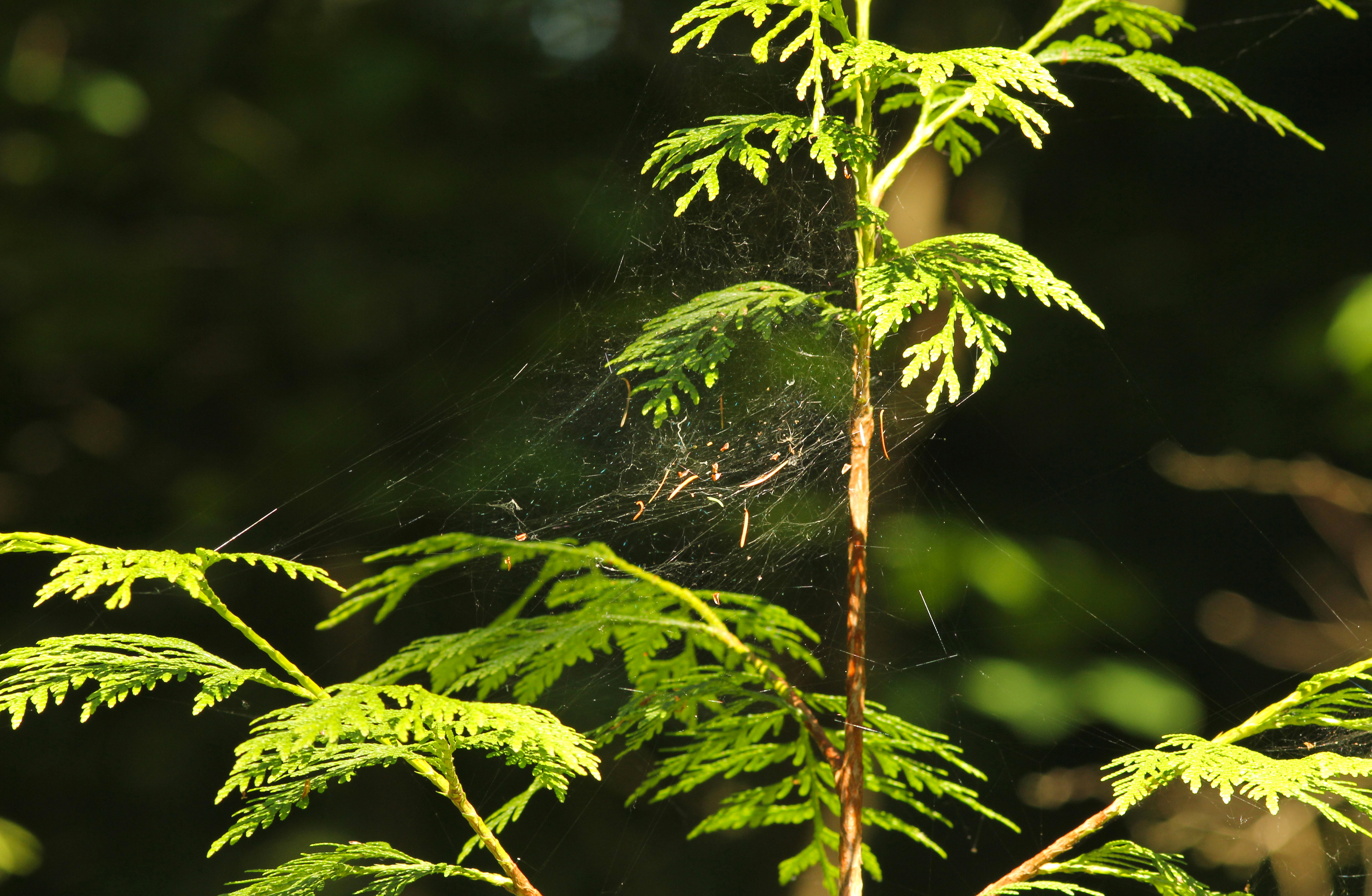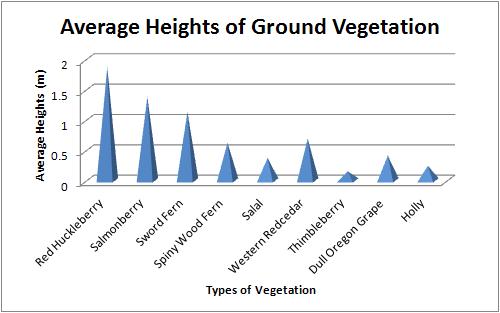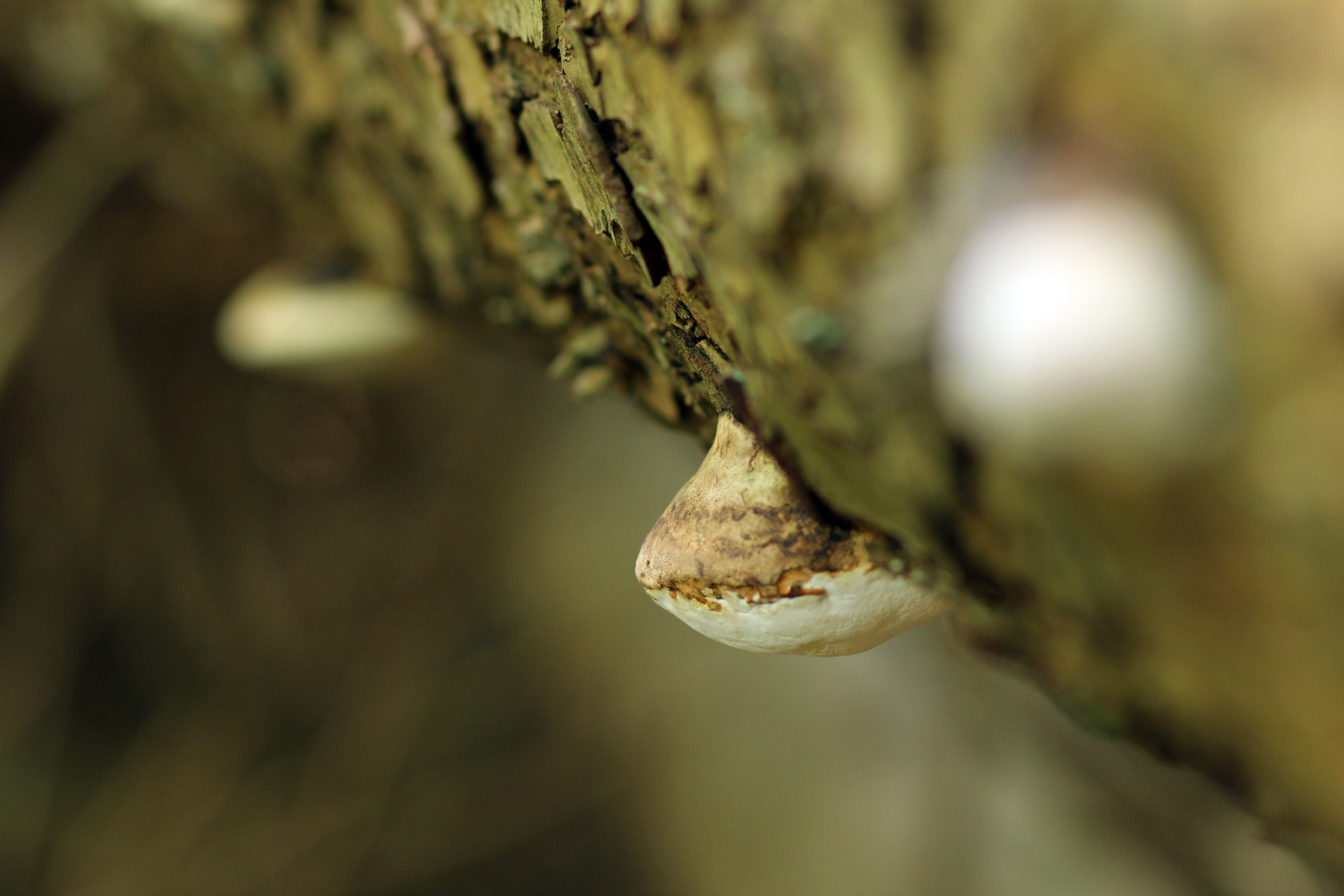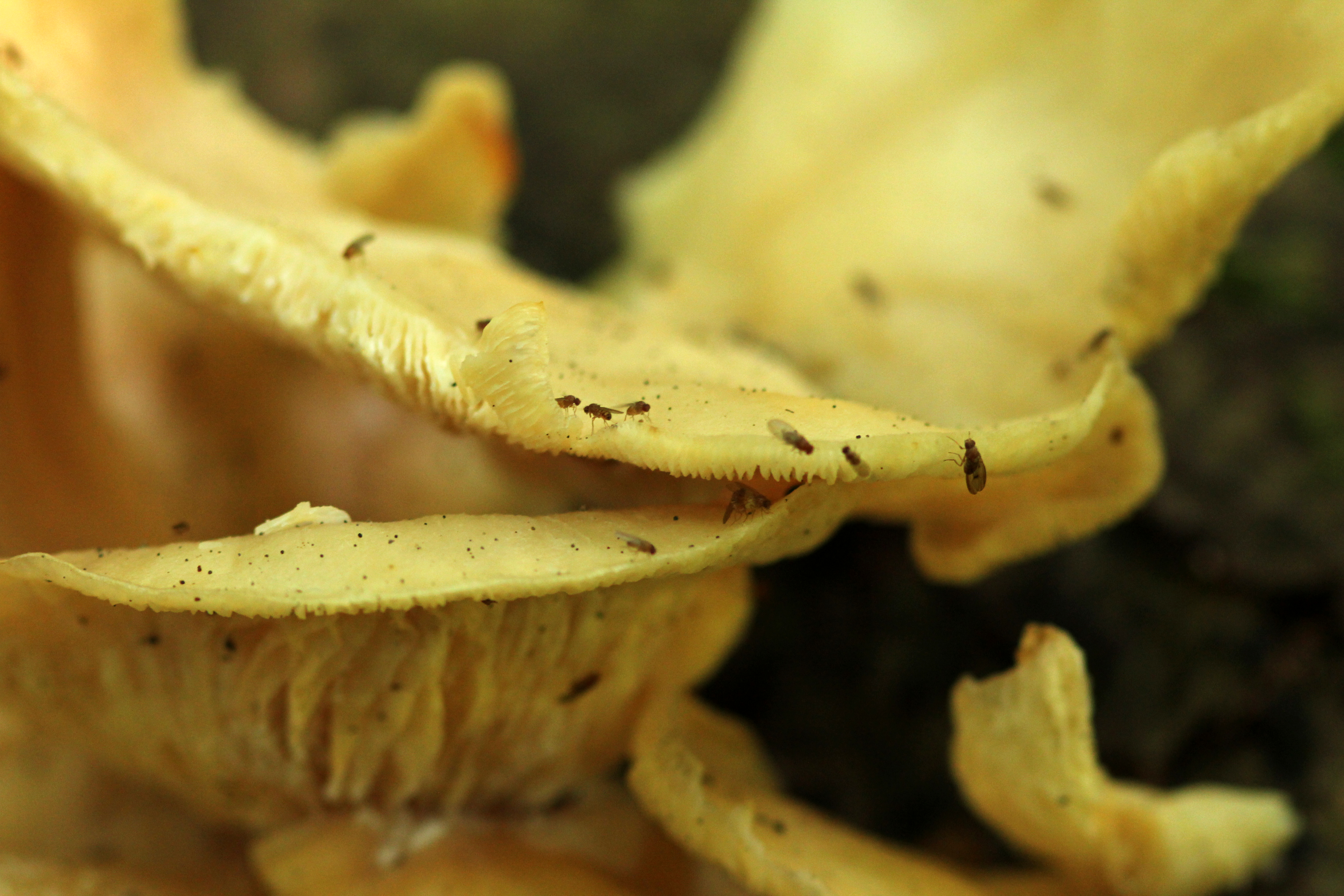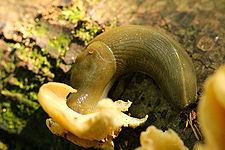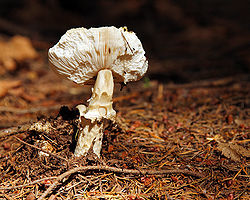CFS: Second-growth Forest Western Redcedar and Douglas-fir
History
In 1910 the tip of Point Grey was chosen as the site for the University of British Columbia. The provincial forest branch started issuing timber licenses to clear the space. In 1912, 65 timber sale licenses were issued to clearcut the second-growth timber and dead and down timber. In 1919 a serious brush fire broke out near Camosun Bog and this blaze burned 200 hectares.
You can see evidence of that fire in the forest today. Some of the standing dead trees in the area have charcoal on their outer surfaces. As well, when when digging a soil pit, you may find charcoal in the humus or mineral soil profile. Do you think all of this charcoal came from the 1919 fire?
General
Elevation: 94 m above sea level
Aspect: South
Adjacency: This area is beside the farm centre, agroforestry trail and the new development/road.
Canopy Cover: 91 %
Major Tree Species by Volume: Western redcedar (Cw)
Minor Tree Species by Volume: Douglas-fir (Fd)
Average Height of Trees: 17 m
Site Series: 04 Fd-Swordfern
Soil
Forest Floor
Nutrient Regime: Rich
Site Distribution: High density
Exposure type: closed canopy
Soil Order: Vermimull
Litter
Depth: 0.79 m
Structure: Loose
There is no indication of root, mycelial, or fecal matter in the litter layer.
Fermentation
Depth: 0.03 m
Structure: Loose
The mycelial abundance if few, however there is plenty of fecal matter in this layer. There is a medium amount of fine roots.
Humus
Depth: 0.01 m
Structure: Friable
The mycelial abundance if few, however there is plenty of fecal matter in this layer. There is a medium amount of fine roots.
Mineral Soil
| Horizon Type | Depth (m) | Colour | Texture | Course Frag. % (G/C/S) | Course Frag. Shape | Root Abundance/Size | Structure Class | Structure Kind |
|---|---|---|---|---|---|---|---|---|
| Ah | 0.03 | 10R 2.5/1 | Loamy sand | N/A | N/A | Fine/Very fine | Fine | Granular |
| Ahe | 0.05 | 7.5YR 2.5/2 | Loamy sand | N/A | N/A | Medium/Very fine | Fine | Granular |
| Bf | 0.63 | 10YR 3/6 | Sand | 25/7/1 | Sub-angular Blocky | Fine/Very few | N/A | Single Grain |
| Cgc | 0.79+ | 2.5YR 7/5 | N/A | N/A | N/A | None | Massive | Cemented |
Tree Layers
The canopy in this second-growth forest is dominated by Douglas-fir. This may be hard to notice because of the thick sub-canopy layer of western redcedars. These cedars vary in heights and DBH but under it's shade in the ground vegetation to high up in the canopy as a co-dominant species to the Douglas-fir.
In the scarce canopy gaps grow the shade-intolerant, deciduous bigleaf maple and red alder.
Wildlife Trees and Large Woody Debris
This highly dense stand has numerous standing dead, or topped over, trees. Some of the stems are broken or split because of snow damage. Walking is a little difficult.
Look for fungal fruiting bodies on the living and dead trees, like the shelf fungus in the photo.
Wildlife
There is plenty of wildlife activity in this portion of the stand. Look under the ground vegetation to see the smaller world of insects and molluscs.
These fungi are food for molluscs (like the banana slug eating the oyster mushroom in the photo below), ants, and small insects.
Critical Thinking
What is the first thing you notice when you look at this stand? How much understory is there? Why?
Can you think of any reasons why western redcedar is more common in this area compared to other areas at the farm?
What are some traditional uses of redcedar? How could redcedar products be used on the Farm?
